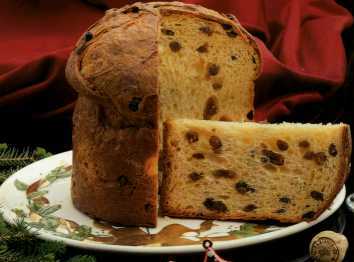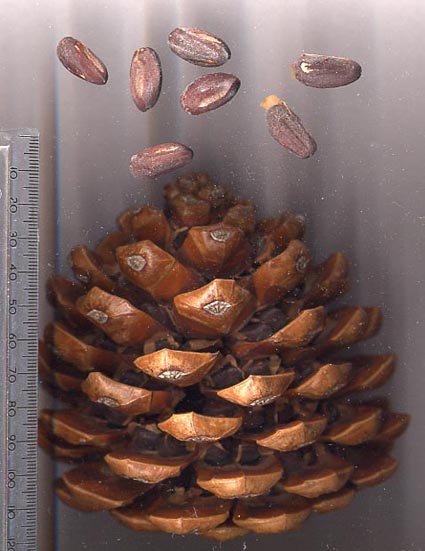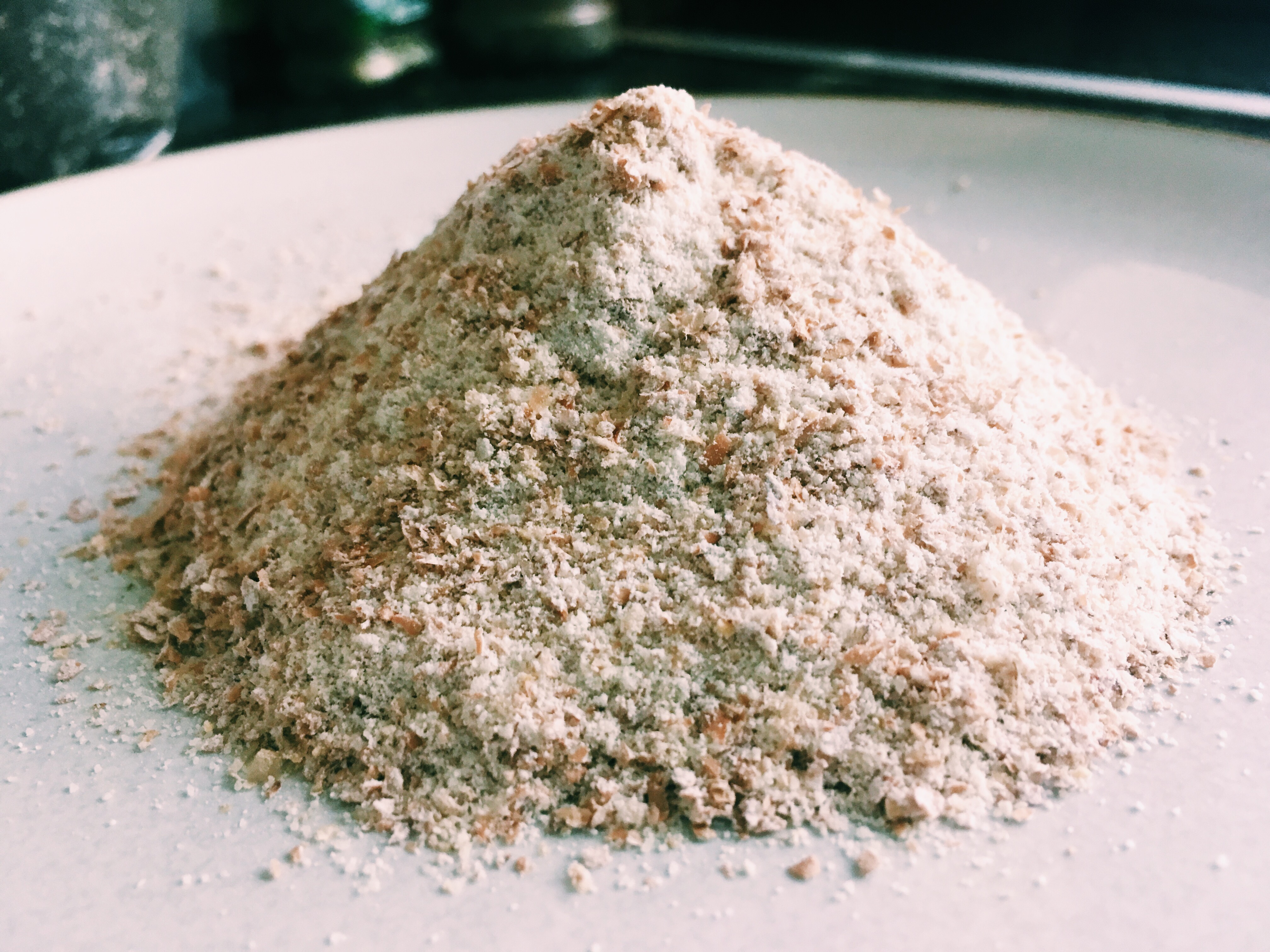|
Bisciola
''Bisciola'' () is an Italian sweet leavened bread originating in the Valtellina Valley of Lombardy, Italy. It is typically prepared for Christmas, during which time it is an essential component of Christmas festivities. It is also known as ''panettone valtellinese'', ''besciola'', and ''pan di fich'', the latter a name in the local dialect literally translating as 'fig bread'. Etymology The term ''bisciola'' probably derives from the Latin ''buccella'', meaning 'morsel'. A legend states that in 1797, Napoleon was passing through the region and ordered his cook to prepare a sweet using local ingredients. The cook obtained buckwheat flour, butter, dried figs, grapes, honey, and nuts, and created what came to be known as ''bisciola''. However, according to ''La cucina Italiana'', Napoleon was never in Valtellina. Since ''bisciola'' was traditionally a peasant food, its original recipe was never recorded and is probably an "ancient cake recipe". Description The bread has been ... [...More Info...] [...Related Items...] OR: [Wikipedia] [Google] [Baidu] |
List Of Sweet Breads
This is a list of sweet breads. Sweet bread, also referred to as pan dulce, buns or coffee bread, is a bread or cake that is typically sweet in flavor. Some sweet breads, such as Portuguese Pao Douce, may be prepared with potato flour, which imparts a sweet flavor and light texture to them. Some sweet breads that originated as cake-breads, such as lardy cake, Bath buns and Chelsea buns, are classified as sweet breads in contemporary culinary taxonomy, even though some still have the word "cake" in them. Sweet breads A * * bread * B * * * * * * * * * * * * * * * C * * * Challah – Jewish honey egg bread * * * * * * * * * * * D * * – in Denmark, these types of pastries are referred to as ''wienerbrød'' * E * F * G * – Armenian pastry or sweet bread * * * * * H * * * * * I * K * – Hungarian sweet bread * * * * – dates to the start of the 13th century as a unique bread served at Polish weddings * L * ... [...More Info...] [...Related Items...] OR: [Wikipedia] [Google] [Baidu] |
Panettone
Panettone (, ; lmo, label= Milanese, panetton ) is an Italian type of sweet bread, and fruitcake, originally from Milan, usually prepared and enjoyed for Christmas and New Year in Western, Southern, and Southeastern Europe as well as in South America, Eritrea, Australia, the United States and Canada. It has a cupola shape, which extends from a cylindrical base and is usually about high for a panettone weighing . Other bases may be used, such as an octagon, or a frustum with a star section shape more common to pandoro. It is made during a long process that involves curing the dough, which is acidic, similar to sourdough. The proofing process alone takes several days, giving the cake its distinctive fluffy characteristics. It contains candied orange, citron, and lemon zest, as well as raisins, which are added dry and not soaked. Many other variations are available such as plain or with chocolate. It is served in wedge shapes, vertically cut, accompanied with sweet hot beve ... [...More Info...] [...Related Items...] OR: [Wikipedia] [Google] [Baidu] |
Apricot
An apricot (, ) is a fruit, or the tree that bears the fruit, of several species in the genus '' Prunus''. Usually, an apricot is from the species '' P. armeniaca'', but the fruits of the other species in ''Prunus'' sect. ''Armeniaca'' are also called apricots. Etymology ''Apricot'' first appeared in English in the 16th century as ''abrecock'' from the Middle French ''aubercot'' or later ''abricot'', from Spanish '' albaricoque'' and Catalan ''a(l)bercoc'', in turn from Arabic الْبَرْقُوق (al-barqūq, "the plums"), from Byzantine Greek βερικοκκίᾱ (berikokkíā, "apricot tree"), derived from late Greek ''πραικόκιον'' (''praikókion'', "apricot") from Latin '' ersica ("peach")praecocia'' (''praecoquus'', "early ripening"). Species Apricots are species belonging to ''Prunus'' sect. ''Armeniaca''. The taxonomic position of '' P. brigantina'' is disputed. It is grouped with plum species according to chloroplast DNA sequences, but more closel ... [...More Info...] [...Related Items...] OR: [Wikipedia] [Google] [Baidu] |
Almond
The almond (''Prunus amygdalus'', syn. ''Prunus dulcis'') is a species of tree native to Iran and surrounding countries, including the Levant. The almond is also the name of the edible and widely cultivated seed of this tree. Within the genus '' Prunus'', it is classified with the peach in the subgenus ''Amygdalus'', distinguished from the other subgenera by corrugations on the shell ( endocarp) surrounding the seed. The fruit of the almond is a drupe, consisting of an outer hull and a hard shell with the seed, which is not a true nut. ''Shelling'' almonds refers to removing the shell to reveal the seed. Almonds are sold shelled or unshelled. Blanched almonds are shelled almonds that have been treated with hot water to soften the seedcoat, which is then removed to reveal the white embryo. Once almonds are cleaned and processed, they can be stored over time. Almonds are used in many food cuisines, often featuring prominently in desserts, such as marzipan. The almond t ... [...More Info...] [...Related Items...] OR: [Wikipedia] [Google] [Baidu] |
Pine Nut
Pine nuts, also called piñón (), pinoli (), pignoli or chilgoza (), are the edible seeds of pines (family Pinaceae, genus ''Pinus''). According to the Food and Agriculture Organization, only 29 species provide edible nuts, while 20 are traded locally or internationally owing to their seed size being large enough to be worth harvesting; in other pines, the seeds are also edible, but are too small to be of notable value as a human food. Species and geographic spread In Asia, two species in particular are widely harvested: Korean pine (''Pinus koraiensis'') in northeast Asia (the most important species in international trade) and chilgoza pine (''Pinus gerardiana'') in the western Himalaya. Four other species, Siberian pine (''Pinus sibirica''), Siberian dwarf pine (''Pinus pumila''), Chinese white pine (''Pinus armandii'') and lacebark pine (''Pinus bungeana''), are also used to a lesser extent. Russia is the largest producer of ''Pinus sibirica'' nuts in the world, foll ... [...More Info...] [...Related Items...] OR: [Wikipedia] [Google] [Baidu] |
Hazelnut
The hazelnut is the fruit of the hazel tree and therefore includes any of the nuts deriving from species of the genus '' Corylus'', especially the nuts of the species ''Corylus avellana''. They are also known as cobnuts or filberts according to species. Hazelnuts are used in baking and desserts, confectionery to make praline, and also used in combination with chocolate for chocolate truffles and products such as chocolate bars, hazelnut cocoa spread such as Nutella, and Frangelico liqueur. Hazelnut oil, pressed from hazelnuts, is strongly flavored and used as a cooking oil. Turkey and Italy are the world's two largest producers of hazelnuts. Description A cob is roughly spherical to oval, about long and in diameter, with an outer fibrous husk surrounding a smooth shell, while a filbert is more elongated, being about twice as long as its diameter. The nut falls out of the husk when ripe, about seven to eight months after pollination. The kernel of the seed is edib ... [...More Info...] [...Related Items...] OR: [Wikipedia] [Google] [Baidu] |
Yeast
Yeasts are eukaryotic, single-celled microorganisms classified as members of the fungus kingdom. The first yeast originated hundreds of millions of years ago, and at least 1,500 species are currently recognized. They are estimated to constitute 1% of all described fungal species. Yeasts are unicellular organisms that evolved from multicellular ancestors, with some species having the ability to develop multicellular characteristics by forming strings of connected budding cells known as pseudohyphae or false hyphae. Yeast sizes vary greatly, depending on species and environment, typically measuring 3–4 µm in diameter, although some yeasts can grow to 40 µm in size. Most yeasts reproduce asexually by mitosis, and many do so by the asymmetric division process known as budding. With their single-celled growth habit, yeasts can be contrasted with molds, which grow hyphae. Fungal species that can take both forms (depending on temperature or other conditions) a ... [...More Info...] [...Related Items...] OR: [Wikipedia] [Google] [Baidu] |
Buckwheat
Buckwheat (''Fagopyrum esculentum''), or common buckwheat, is a flowering plant in the knotweed family Polygonaceae cultivated for its grain-like seeds and as a cover crop. The name "buckwheat" is used for several other species, such as ''Fagopyrum tataricum'', a domesticated food plant raised in Asia. Despite its name, buckwheat is not closely related to wheat. It is not a cereal, nor is it even a member of the Poaceae, grass family. Buckwheat is related to sorrel, Polygonum, knotweed, and rhubarb, and is known as a pseudocereal because its seeds' culinary use is the same as cereals, owing to their high starch content. Etymology The name "buckwheat" or "beech wheat" comes from its triangular seeds, which resemble the much larger seeds of the beech nut from the beech, beech tree, and the fact that it is used like wheat. The word may be a translation of Middle Dutch ''boecweite'': ''boec'' (Modern Dutch ''beuk''), "beech" (see Proto-Indo-European language, PIE *''bhago''-) and ... [...More Info...] [...Related Items...] OR: [Wikipedia] [Google] [Baidu] |
Whole-wheat Flour
Whole-wheat flour (in the US) or wholemeal flour (in the UK) is a powdery substance, a basic food ingredient, derived by grinding or mashing the whole grain of wheat, also known as the wheatberry. Whole-wheat flour is used in baking of breads and other baked goods, and also typically mixed with lighter "white" unbleached or bleached flours (that have been treated with flour bleaching agent(s)) to restore nutrients (especially fiber, protein, and vitamins), texture, and body to the white flours that can be lost in milling and other processing to the finished baked goods or other food(s). White whole wheat flour In the United States, white whole-wheat flour is flour milled from hard white spring wheat and contains the bran and germ. In the United Kingdom and India whole-wheat flour is more commonly made from white wheat instead of hard winter red wheat, as in the United States See also * Wheat flour * Whole grain * Unifine Mill * Graham bread an early attempt to reintro ... [...More Info...] [...Related Items...] OR: [Wikipedia] [Google] [Baidu] |
Wheat Flour
Wheat flour is a powder made from the grinding of wheat used for human consumption. Wheat varieties are called "soft" or "weak" if gluten content is low, and are called "hard" or "strong" if they have high gluten content. Hard flour, or ''bread flour'', is high in gluten, with 12% to 14% gluten content, and its dough has elastic toughness that holds its shape well once baked. Soft flour is comparatively low in gluten and thus results in a loaf with a finer, crumbly texture. Soft flour is usually divided into cake flour, which is the lowest in gluten, and pastry flour, which has slightly more gluten than cake flour. In terms of the parts of the grain (the grass fruit) used in flour—the endosperm or protein/starchy part, the germ or protein/fat/vitamin-rich part, and the bran or fiber part—there are three general types of flour. White flour is made from the endosperm only. Brown flour includes some of the grain's germ and bran, while whole grain or ''wholemeal flour'' is mad ... [...More Info...] [...Related Items...] OR: [Wikipedia] [Google] [Baidu] |
Sourdough
Sourdough or sourdough bread is a bread made by the fermentation of dough using wild lactobacillaceae and yeast. Lactic acid from fermentation imparts a sour taste and improves keeping qualities. History In the ''Encyclopedia of Food Microbiology'', Michael Gaenzle writes: "The origins of bread-making are so ancient that everything said about them must be pure speculation. One of the oldest sourdough breads dates from 3700 BCE and was excavated in Switzerland, but the origin of sourdough fermentation likely relates to the origin of agriculture in the Fertile Crescent and Egypt several thousand years earlier", which was confirmed a few years later by archeological evidence. ... "Bread production relied on the use of sourdough as a leavening agent for most of human history; the use of baker's yeast as a leavening agent dates back less than 150 years." Pliny the Elder described the sourdough method in his '' Natural History'': Sourdough remained the usual form of leavening d ... [...More Info...] [...Related Items...] OR: [Wikipedia] [Google] [Baidu] |
Zabaione
Zabaione () or zabaglione (, , ) is an Italian dessert, or sometimes a beverage, made with egg yolks, sugar, and a sweet wine (usually Moscato d'Asti or Marsala wine). Some versions of the recipe incorporate spirits such as cognac. The dessert version is a light custard, whipped to incorporate a large amount of air. Since the 1960s, in restaurants in areas of the United States with large Italian populations, zabaione is usually served with strawberries, blueberries, peaches, etc., in a champagne coupe. In France, it is called ''sabayon'', while its Italian name is ''zabaione'' or ''zabaglione'' (or ''zabajone'', an archaic spelling). The dessert is popular in Argentina and Uruguay, where it is known as ''sambayón'' (from the Piedmontese ''sambajon'') and is a popular ice cream flavour. In Colombia, the name is ''sabajón''. In Venezuela, there is also a related egg-based dessert drink called '' ponche crema''. This is consumed almost exclusively during Christmas time. Hi ... [...More Info...] [...Related Items...] OR: [Wikipedia] [Google] [Baidu] |
.jpg)



_-_whole_with_kernels.jpg)



